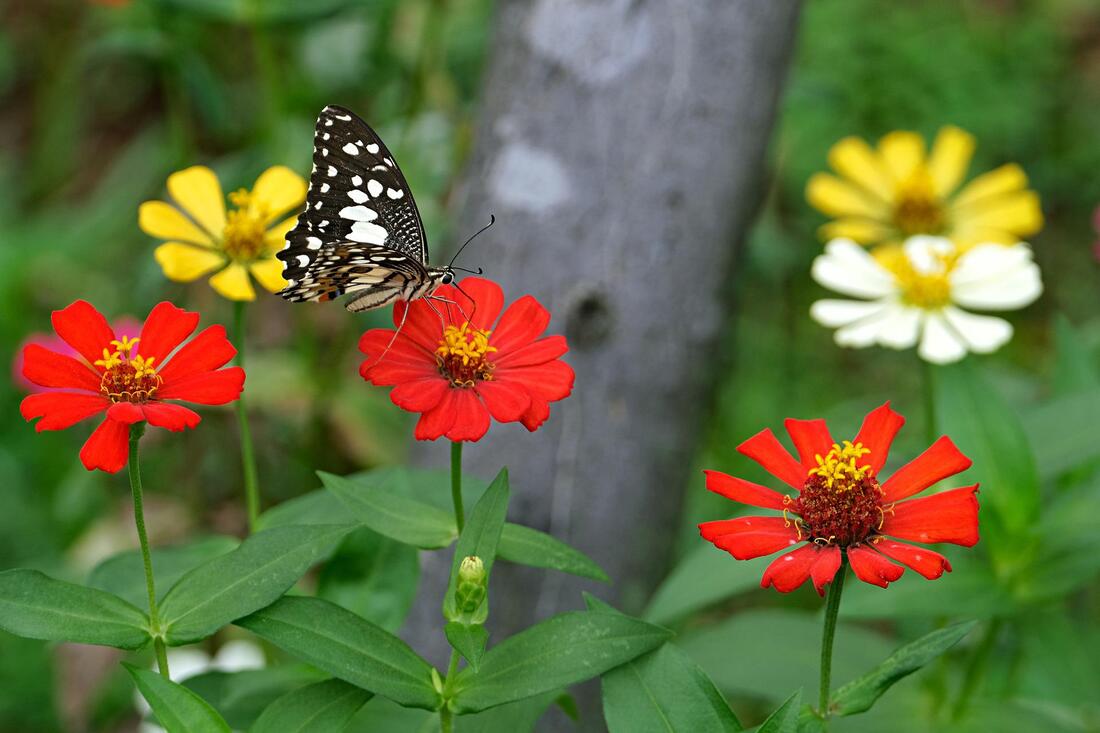How to Grow and Care for Zinnias
Zinnias create an explosion of color in the garden bed with their daisy-like flowers in colors ranging from pale yellow to brilliant reds and orange. But, zinnias include a range of more subtle colors, as well. Available in nearly every color except blue, black and brown, zinnias are extremely versatile.
Heights range from tiny dwarf plants of 6 to 8 inches to towering 4-foot varieties. Blooms can be single (like a daisy) or double or even dome shaped.These quick-growing flowers are best sown directly in the garden in late spring once the danger of frost has passed.
Heights range from tiny dwarf plants of 6 to 8 inches to towering 4-foot varieties. Blooms can be single (like a daisy) or double or even dome shaped.These quick-growing flowers are best sown directly in the garden in late spring once the danger of frost has passed.
- Location: Select an area for zinnias that receives full sun for 6 to 8 hours a day. These sun-loving plants thrive in full sun.
- Soil: Prepare the bed by digging or tilling to a depth of 8 inches. Remove any rocks, roots or other debris. Add a 2 to 3 inch layer of well-rotted manure or compost and work it in well with the existing soil. Organic matter improves the texture of the soil, increases aeration and promotes good drainage. Nutrients release slowly as the organic matter breaks down in the soil.
- Planting: Plant zinnias to a depth of 1/8 inch and cover lightly with soil. Space dwarf varieties 8 inches apart and tall varieties 12 to 18 inches apart. Many prefer to sow zinnia seeds closer and thin to the healthiest plants when seedlings emerge. Zinnias for cut flowers can be spaced closely to encourage tall stems, but this does increase the chance of disease, particularly powdery mildew.
- Watering: Water to moisten the soil and keep it moist until seedlings emerge and young plants show signs of vigorous growth. Reduce water to once a week. Water to moisten the soil to the root level and allow the soil to dry slightly between waterings. Zinnias are drought tolerant and survive well in hot dry weather. Supplemental water encourages lush growth, but is not required.
- Pinching: Pinch back new growth when seedlings are 4 to 6 inches high to encourage dense compact foliage. Repeat in 3 weeks, pinching out new growth on all branches.
- Deadheading: Deadhead zinnia blooms once they fade. Deadheading tricks the plant into believing it has not produced enough blooms to reproduce. With regular deadheading zinnias continue to send out new flowers. Cut zinnias for floral displays and fresh bouquets by cutting just above a leaf node, the area where leaves join the stem. This forces the plant to produce new flowers on the same stem.
- Fertilizer: Apply water-soluble fertilizer once a month.
Try old-fashioned zinnias to add life and color to your garden bed. These easy-to-care-for flowers produce blooms 8 to 12 weeks from planting and produce a profusion of flowers that last until fall frost threatens.
